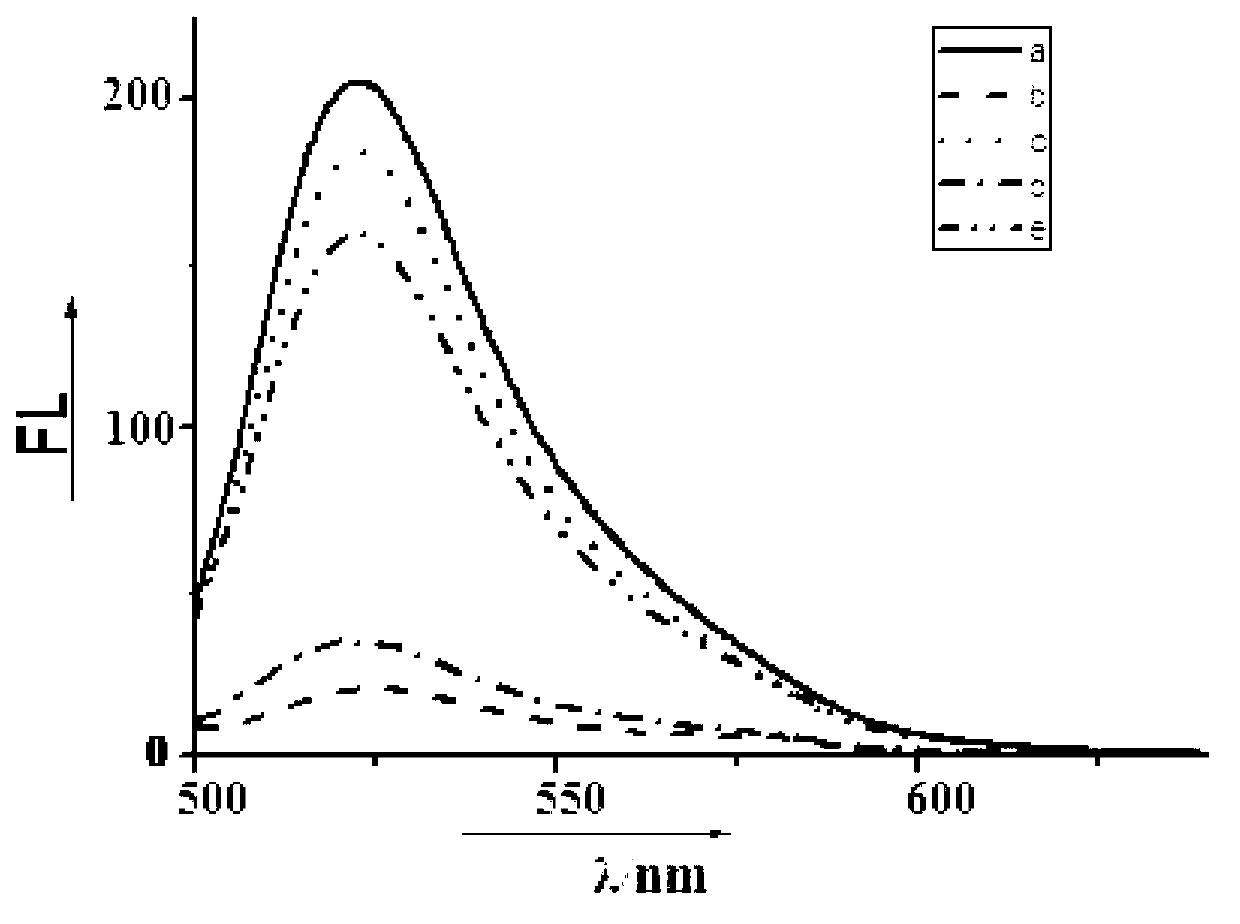Fluorescence detection method for detecting cocaine by use of oligonucleotide and graphene oxide
An oligonucleotide and fluorescence detection technology, which is applied in the field of fluorescence detection, can solve the problems of low sensitivity and expensive detection instruments, and achieve high specificity and sensitivity, and the effect of simple detection methods
- Summary
- Abstract
- Description
- Claims
- Application Information
AI Technical Summary
Problems solved by technology
Method used
Image
Examples
Embodiment
[0028] 1) Add 1 μL of fluorescein FAM-labeled oligonucleotide probe with a concentration of 1.8 μmol / L to 1 mL of Tris-HCl buffer solution, then add 0.6 mL of water for fluorescence detection, and record the oligonucleotide The fluorescence emission band of the probe, and the results of detection of fluorescence intensity are as follows: figure 2 as shown in a;
[0029] 2) Then add 3 μL of graphene oxide solution, and the oligonucleotide probes are quickly adsorbed to the surface of graphene oxide at room temperature, forming oligonucleotide / graphene oxide complexes, and quenching the fluorescence signal of fluorescein FAM. off, the time of fluorescence quenching is 2 minutes, and the results of detecting fluorescence intensity under the same fluorescence spectrum measurement conditions are as follows: figure 2 as shown in b;
[0030] 3) Add 1 μL of complementary probes with a concentration of 1.8 μmol / L to the oligonucleotide / graphene oxide complex, and the complementary ...
PUM
 Login to View More
Login to View More Abstract
Description
Claims
Application Information
 Login to View More
Login to View More - R&D
- Intellectual Property
- Life Sciences
- Materials
- Tech Scout
- Unparalleled Data Quality
- Higher Quality Content
- 60% Fewer Hallucinations
Browse by: Latest US Patents, China's latest patents, Technical Efficacy Thesaurus, Application Domain, Technology Topic, Popular Technical Reports.
© 2025 PatSnap. All rights reserved.Legal|Privacy policy|Modern Slavery Act Transparency Statement|Sitemap|About US| Contact US: help@patsnap.com


